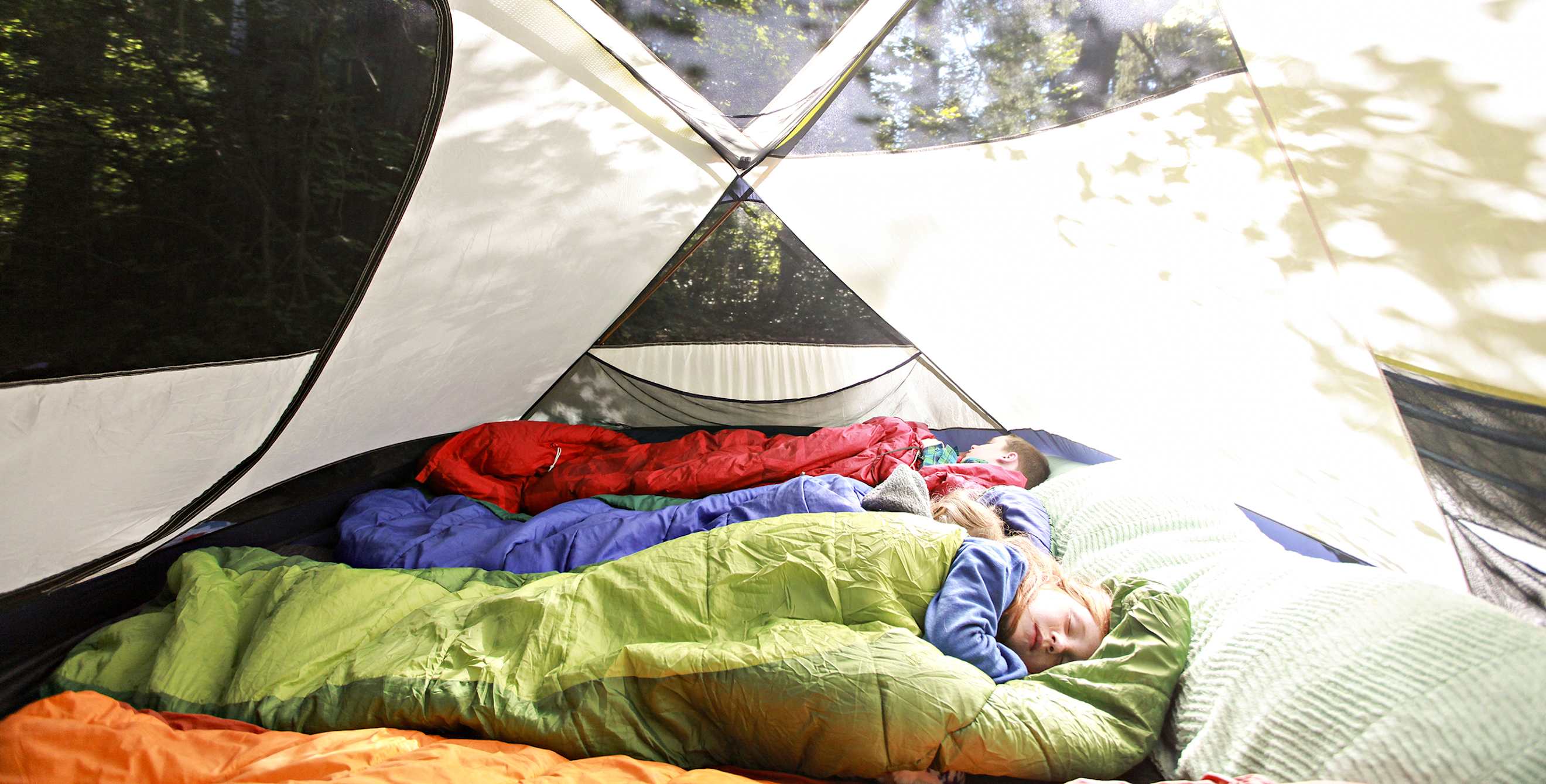
How to Choose a Sleeping Bag
Whether you’re car camping or ultralight backpacking, here’s how to pick your perfect match.

If you've ever shopped for a sleeping bag, you know that it can feel like you need a PhD in the subject to choose (and care for) the right one. So we asked a few outdoorsy types to simplify the process. Here's what you really need to consider.
Shape
If you’re seriously making a habit of snoozing outdoors or looking for a backpacking sleeping bag, you’ll probably want a mummy sleeping bag. These are light, compact, and usually hooded; their tight-to-the-body design keeps you super warm but can also feel restrictive. In contrast, rectangular sleeping bags are roomier but heavier and not as warm, which make them a better option for car camping (when you can park at your campsite rather than hike to your site). If you’re hoping to cozy up to a loved one, consider two rectangular bags that can be zipped together, or a double sleeping bag fit for car camping or backpacking.
Fill
"Choosing between synthetic and down bags is the toughest decision you’ll have to make in the sleeping bag world,” says Tim Beck, a volunteer with the California Explorer Search and Rescue team who develops outdoor gear for the North Face. Here’s how to decide: Down-filled sleeping bags are lighter, pack down smaller, and offer more warmth for their weight. However, they’re pricier, unusable when wet (and dry slowly), and can be less humane if made with down plucked off live birds.
Synthetic fill, which is made from polyester, will keep you warm even when it’s wet. It makes your sleeping bag more affordable, but also bulkier and a bit heavier. Casual campers who don’t plan to backpack to their site can feel comfortable sticking with synthetic fill. If you feel you need something that’s easier to tote, you can switch to a certified responsible down bag that is made with more humane practices.
Temperature Rating
The temperature listed on most men’s sleeping bags indicates the lowest comfortable temperature for the average person recommended from tests in a lab, which leaves out many real-life variables that can make you colder. Cold sleepers may want to go for a bag that’s rated at least 10 degrees colder than the lowest nighttime low that you expect to encounter during your camping trip. Women’s sleeping bags instead use a “comfort rating” which already factors in that 10 degrees.
Worried about getting a bag that makes you too hot? If you get overly toasty, you can always unzip your bag and use it as a blanket instead.
Insider Tip: Most sleeping bags don’t come with pillows. Bring your favorite full-size pillow from home, pick up a compressible camping one, or improvise with a balled-up shirt or jacket as your nightly headrest.
How to Store Your Sleeping Bag
At home, many people keep their sleeping bags rolled up tight when not in use. But this isn't a good way to store sleeping bags because the compression makes them lose their loft and warmth.
"If your sleeping bag has down fill, you’ll want it in the largest storage bag possible,” says Corey Simpson, a Patagonia brand spokesperson. “Many manufacturers provide these larger storage bags along with the sleeping bag.” You can also hang your sleeping bag in your closet to keep it from being compressed. Before tucking it away, however, make sure that it’s as dry as possible to stave off mold and mildew.